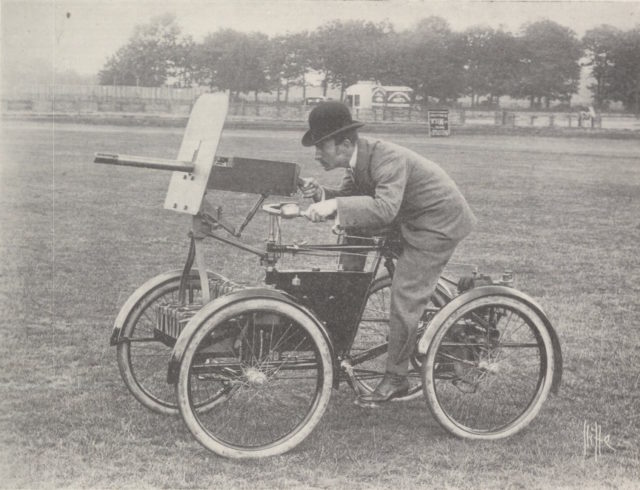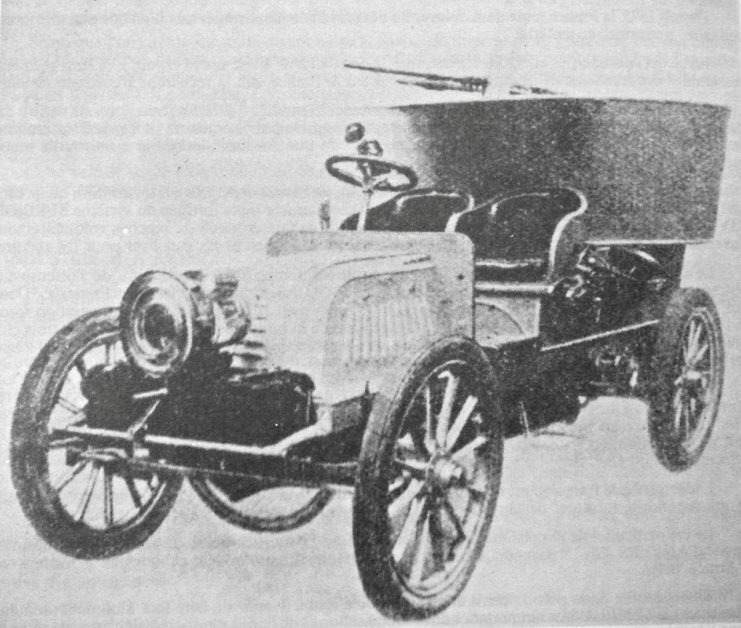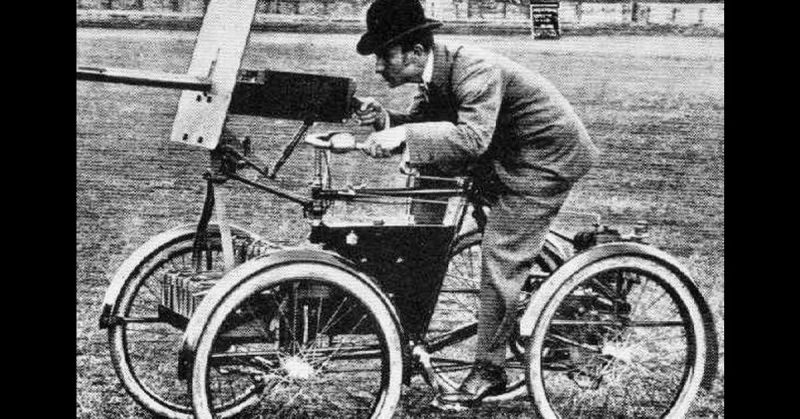The arrival of the tank was a significant development of WWI. The first successful purpose-built fighting vehicle, they added a devastating new element to warfare and had a far reaching effect.
They were not the first fighting vehicles. Previous attempts had been made, often ineffectual, to provide a role for vehicles in war.
Leonardo’s War Machines
In Europe, before the 19th century, there had been a few attempts to develop military vehicles beyond chariots. In the 15th-century during the Hussite Revolt, wagons were turned into mobile fortresses, providing shelter for cannons and men. Later that century, Leonardo da Vinci drew sketches of machines that included an armored vehicle loaded with guns.
Leonardo’s ideas were not practical at the time, and the Hussite war wagons were limited in their use. It was not until the arrival of motor power that practical fighting vehicles were designed.
Transport and Haulage
In the second half of the 19th century, armies began using steam and then internal combustion engines for transport and haulage. Trains were used to move troops around. A few early motor vehicles were utilized to drag artillery and supplies. Their use, however, was limited. Horses were widely available and could reliably get to where they were needed, but the seed had been sewn for combining motor vehicles with war.
Machine-Guns on Wheels
The first attempt to create fighting vehicles involved putting machine-guns, another new development, onto wheels.
In 1898, F. R. Simms, a British motor enthusiast, demonstrated his quadricycle. It was a Maxim machine-gun mounted on a small chassis with four wheels and a motor engine. It was not very practical, as it could not cope with any awkward terrain, but the publicity around it inspired others.

Early Fighting Cars
The result was a spate of “war cars.”
In America, Major R. P. Davidson designed a three-wheeled vehicle carrying a Colt machine-gun which was built by the Charles P. Duryea Company. It had a crew of three, enabling the gun to be fired while the vehicle was moving. The gun could be removed, allowing the vehicle to retreat during combat.
Davidson also experimented with a steam-powered car, as did a Russian engineer by the name of Lutski, but they did not gain the support of military authorities.
Fighting Bathtubs
Early on, the idea of adding armored protection was proposed. In 1896, E. J Pennington suggested a bathtub-style open-topped armored body attached to a war car, above which, two mounts held Maxim machine-guns. It never entered production.
Six years later, F. R. Simms put forward a similar design. His featured two machine-guns, a one-pounder gun, and five crew. He demonstrated the vehicle at motor shows but could not get people interested in it.
The Charron Armoured Car
The Russians turned to the French company Charron Girardot et Voight to create an armored fighting vehicle. What they produced became the template for the armored cars that followed.
The Charron had a structure of armor plating to protect the crew. A revolving turret on the roof allowed a Maxim machine-gun to fire in whatever direction was needed. It carried steel girders on the sides, which could be removed and used for crossing ditches.

The first Charron car was delivered to the Russians in 1904. They used it for riot control in St. Petersburg. After that, something changed their minds, and they canceled their order for 34 cars. The French army bought the only other completed one. No more Charron cars were made.
The Austro-Daimler
Inspired by the Charron car, the Austro-Daimler company created their own car. It had a similar design, with an armored body, slit windows for the driver, and a turret on the roof, with a Skoda machine-gun. One innovation it had was that the driver could raise his seat, so his head appeared through the roof, giving him better all-around vision. The car had a maximum speed of 28 miles per hour.
Despite some success in military maneuvers in 1905-6, the Austro-Hungarian Imperial Army decided against ordering any.
Motor Balloon Guns
The rise of air power, in the form of balloons and dirigibles, led to the next innovation in military vehicles. At the Frankfurt International Exhibition of 1909, two leading gun manufacturers, Krupp and Rheinische Metalwaren und Maschinenfabrik, displayed what was referred to as “motor balloon guns.”
They were relatively simple designs. Guns were mounted on trucks then elevated so they could fire into the sky. It allowed them to be moved around quickly, to fire at enemy aircraft and proved a vehicle could carry something heavier than a machine-gun.
Resistance and Reason
All the different designs faced a serious problem – the resistance of the military establishment to innovation.
It was partly a matter of habit. Any large institution tends to become entrenched. Change is difficult, and the leaders and commanders had weapons they knew worked. Why go through the struggle of adopting something new?
There was also some sound reasoning. Motor vehicles of the time could not cope with the varied and often challenging terrain over which wars were fought. When taken off-road, they were rendered useless. Horses, on the other hand, remained capable of transporting men and weapons wherever they were needed.
Not Getting on Track
The answer was tracked vehicles. In the years just before WWI, the Austrian Lieutenant Gunther Burstyn and the Australian engineer L. A. de Mole tried to interest their governments in using tracked vehicles. Their ideas failed to break through the shell of habitual thinking.
While many fighting vehicles were designed before WWI, it was the necessities of war that created one that worked.
Source:
Ian V. Hogg and John Weeks (1980), The Illustrated Encyclopedia of Military Vehicles
